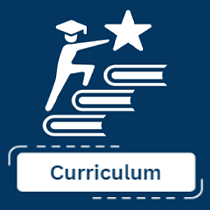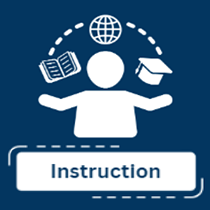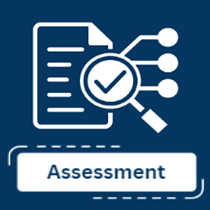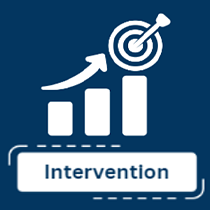6-12 English Instruction
The NNPS Secondary English curriculum utilizes evidence-based literacy instructional practices aligned to the science of reading to foster student growth towards and achievement of the Virginia Standards of Learning in sixth through twelfth grade.




Curriculum
Our 6-12 curriculum is aligned to the 2024 Virginia Standards of Learning.
Each grade-level's curriculum includes 8 or 9 rigorous instructional units that utilize grade level texts to develop literacy skills and build students' knowledge across a variety of topics.
Instruction
High-Quality Instructional Materials
The Virginia Literacy Act requires each school division to provide evidence-based literacy instruction aligned with science-based reading research using approved high-quality instructional materials. NNPS has adopted the following core and supplemental instructional materials to meet this requirement:
Supplemental Instruction

Newsela
In sixth through twelfth grade, teachers can supplement texts used within the units with additional reading material from Newsela's library. This resource provides high-quality texts from various genres and themes offered at multiple Lexile levels, which encourages differentiated instruction.
Assessment
NNPS utilizes a balanced assessment model in order to collect data to set student goals and determine specific and targeted next steps to accelerate learning. Each grade-level model includes state approved diagnostic and summative assessments.

Local Performance Assessments
On September 20, 2018, the Virginia Board of Education approved Guidelines for the Use of Local Performance Assessments to verify credit in End-of-Course Writing. The Standards of Accreditation (8VAC20-131-110B5) permit local school divisions to award a verified credit in writing to a student who “meets the criteria for the receipt of a verified credit in English (writing) by demonstrating mastery of the content of the associated course on an authentic performance assessment, that complies with guidelines adopted by the board.”
Some additional details about this process:
-
Performance assessments generally require students to perform a task or create a product that is scored using a rubric.
-
Performance assessments used to award verified credits must be evaluated using the Virginia Quality Criterion Tool for Performance-Based Assessments. These will include three types of writing covered in English, grades 9-11: persuasive, analytical, and argumentative. At least one of the writing samples must include a research component.
-
Each year, the student’s performance assessment will be scored using rubric from the Virginia Department of Education.
-
Families will be notified of the student’s academic performance after each sample is collected and scored.
-
The school division will review the body of evidence (all three performance assessments) in grade 11 and determine if a student’s achievement is advanced, proficient, or doesn’t meet the standard (fail).
-
Students who score proficient or advanced on the body of evidence will be awarded a verified credit. Students who do not receive credit through the LPA process will have additional opportunities to receive the verified credit.
-
This communication from NNPS outlines the Local Performance Process in greater details, as well as additional details on how the verified credit is awarded.
Additional information from the district and English teachers will be forthcoming. Please contact the NNPS Testing Office with any questions.
Intervention
Data is monitored and analyzed frequently to identify students who may need additional instruction to meet grade-level expectations. Targeted instruction is provided to identified students in small groups using approved programs. This instruction can be provided by a classroom teacher, interventionist, reading specialist, trained instructional assistant or tutor, computer program, or any combination of providers.
High-Quality Instructional Materials
The Virginia Literacy Act requires each school division to provide evidence-based literacy instruction aligned with science-based reading research using approved high-quality instructional materials. NNPS has adopted the following intervention programs to meet this requirement:
Intervention
Whole- and Small-Group Instruction
During READ 180 Whole- and Small-Group Learning, teachers provide direct instruction using the ReaL Book, a work text that includes six high-interest Workshops with reading selections about topics such as the Bill of Rights, D-Day, and space exploration. Every Workshop also includes systemic instruction in academic vocabulary and language, close reading, and academic writing and research.
After beginning the session with the whole class, students work independently on three rotations: the Student Application, Small-Group Learning, and Independent Reading.
The Student Application
The Student Application is the software component of READ 180. Students can choose from a menu of 25 high-interest segments on varying topics including civil rights, breakdancing, and historical figures like Rachel Carson and Nelson Mandela. Each segment begins with an Anchor Video to engage student interest, build background knowledge, and help students form mental images of the subjects they'll be reading about. After watching the Anchor Video, students read passages based on the video content that are geared to their individual reading levels. They continue working with the passages by answering questions using comprehension strategies, building vocabulary and spelling skills using words from the text, and responding to writing prompts based on the passages and video. As students work in the Student Application, the software tracks their progress, reports data to their teacher, and customizes instruction to meet their needs.
Independent Reading
During Independent Reading, students can choose grade-appropriate text from the independent Reading library, which includes 30 paperbacks, 46 eBooks, 5 audiobooks, and 46 nonfiction articles called eReads. All digital texts have supportive features, such as audio, highlighting, and a clickable glossary, to help students as they read independently.










